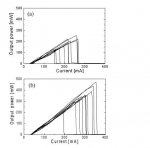daguin
0
- Joined
- Mar 29, 2008
- Messages
- 15,989
- Points
- 113
I just went back through the thread to see who it was that mentioned the vibration dampening system. It was LuxIgnis. I have a complete 203 and a 205 drive now (minus the diodes), but I don't think you want to pay to have these shipped to Italy just to look at the differences between the drives.
If you do, cool. If you don't, cool. If no one wants to examine the differences between the two drives, Imma harvest the bits and bobs for FlaminPyro and toss the carcasses in the trash.
Peace,
dave
If you do, cool. If you don't, cool. If no one wants to examine the differences between the two drives, Imma harvest the bits and bobs for FlaminPyro and toss the carcasses in the trash.
Peace,
dave





